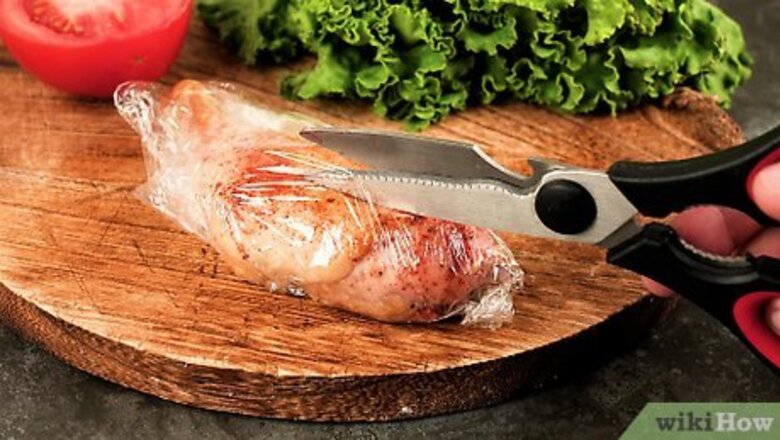
views
Thawing the Chicken in the Refrigerator
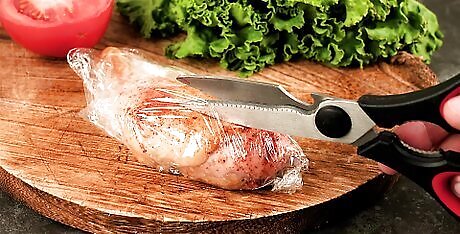
Remove the chicken from its packaging. Take the chicken out of your freezer and remove all of the plastic packaging around it. Try not to leave your chicken exposed on the counter for very long. If you accidentally leave the chicken at room temperature for over an hour, you should throw it away and replace it with a new one. Use a pair of scissors to open the packaging over your sink in case any extra water spills out. The warmer the weather, the faster bacteria can form on your chicken. If it's a hot day outside, be extra careful to get your chicken into the refrigerator as soon as you remove the packaging.
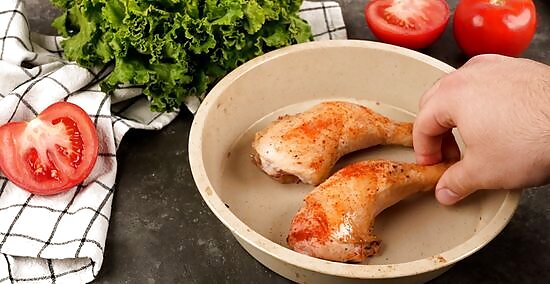
Place the chicken into a dish or baking pan. As the chicken defrosts, some of the melted water and dissolved meat protein might leak out from the meat. Be sure to use a dish or baking pan with high sides to catch any leakage from the thawing chicken. Make sure to thoroughly clean the dish or pan before and after you use it. For small pieces you can use a bowl instead.

Leave the chicken in the refrigerator for 24-48 hours. For every 5 pounds (80 oz) of chicken you want to defrost, leave the chicken in the refrigerator for an additional 24 hours. You can safely leave the defrosted chicken in the refrigerator for an additional 3-5 days before either freezing or heating it. Place the chicken on the bottom shelf of the refrigerator in case any juices leak out onto your other food. Pay attention to the temperature of your refrigerator. Although your chicken will thaw faster at a higher temperature, be sure to keep your refrigerator at a safe temperature of about 40 °F (4 °C). You'll know that the chicken has thawed completely when there are no more ice crystals and the meat feels soft when you touch it.
Using a Cold Water Bath
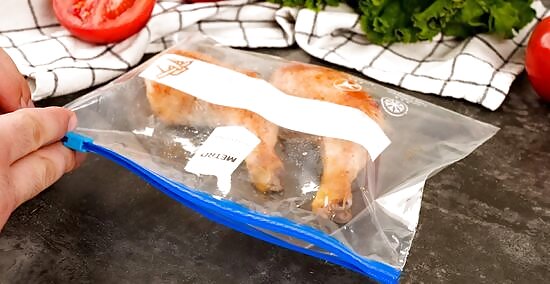
Seal the chicken in a watertight bag. If the chicken is already in watertight packaging you can leave it as is, otherwise seal it in a plastic bag. Most re-sealable zipper bags will keep out water, but be sure to face the zipper out of the water if you can. Add an additional plastic bag over the top and tie it off with a rubber band if you're concerned about leakage. If there are any leaks in the bag, the chicken could become contaminated or could soak up some of the water and become moist.
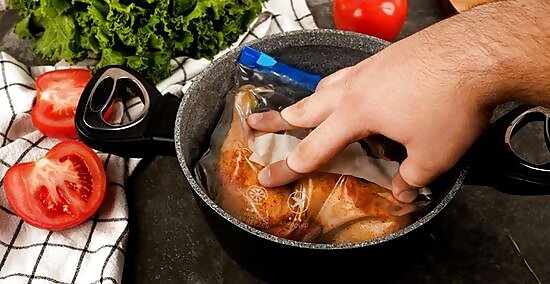
Cover the chicken completely with cold water. Fill a tall pot with cold tap water and place the covered chicken inside. Double check that the bag is keeping out all of the water. Remove the chicken immediately and reseal the bag if you notice any leakage. Fill your sink with cold water and place the chicken inside as a convenient alternative. When you're done, simply drain the water from your sink for easy cleanup. Make sure that the entire chicken is submerged, any parts that stick up from the water could more easily become contaminated with bacteria.
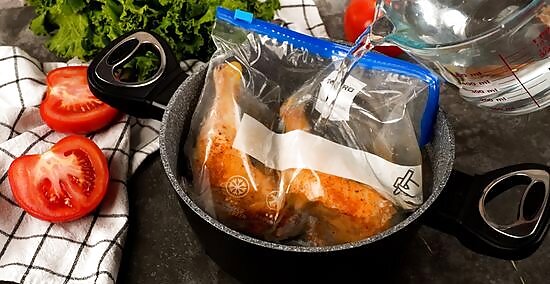
Change the water every 30 minutes until the chicken has thawed. Continue to empty out and refill the pot with cold tap water every 30 minutes. Leave the chicken in the pot for about 30 minutes per 1 pound (16 oz) that you are trying to defrost. A 1 pound (16 oz) chicken, for example, should thaw in less than an hour, while a 4 pounds (64 oz) chicken would take closer to 2 or 3 hours to completely thaw. If you notice any frost on the chicken, it needs to be thawed for more time.
Microwaving the Chicken

Remove all of the wrappers from the chicken. Cut off all of the plastic from around the chicken to prep it for the microwave. Do not leave the chicken out on the counter after you unwrap it. Even if you have other food to prepare, continue to defrost the chicken before moving on to other parts of your meal. Not all plastic is safe to microwave, so be sure to remove it to avoid any excess plastic melting onto your chicken.

Place the chicken on a microwave-safe plate. In case there is any water that runs off from the chicken as it thaws, be sure to place the chicken on a plate before you place it in the microwave. If you're not sure if a plate is safe to use, you can easily check if it's microwave safe before you use it. If there is a lot of frost on your chicken, consider using a microwave-safe bowl instead to catch the melting water.
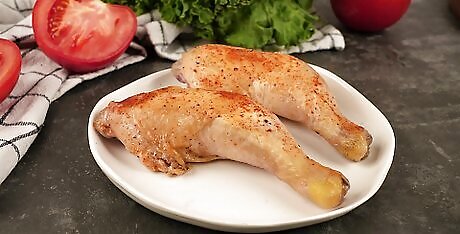
Thaw the chicken on low heat for 6-8 minutes per 1 pound (16 oz). As soon as you finish defrosting the chicken, heat it immediately on high heat in the microwave, or in your oven or stove. Check that the chicken is fully defrosted by touching it with your finger every few minutes. Be sure to let it cool for at least a minute before you touch it. The chicken should feel soft when it is defrosted, and there should be no visible ice crystals. Always freeze any chicken that you want to save as soon as possible to avoid any potential contamination.















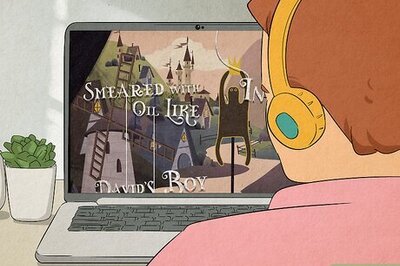




Comments
0 comment